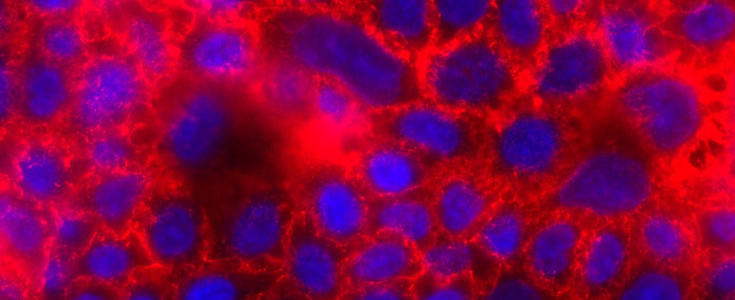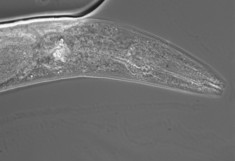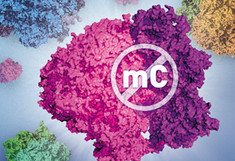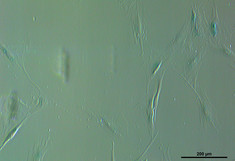
Our Research
Extension of healthy lifespan
One of the major challenges that modern medicine and biology are facing today is the continuously increasing life expectance of the population and in consequence the increase in age-related pathologies. Since the changes in physiology and morphology of organisms, tissues, and cells during their life span are still poorly understood, it is of vital importance to gain insight into the molecular mechanisms of ageing and ageing-associated pathologies in order to design strategies that allow for maximizing the human health span.Therefore, our focus of research is on understanding the cellular and molecular changes that occur during ageing, how these changes affect tissue functionality, and on where and how repair and regeneration needs to counteract these changes (Zeitschrift für Gerontologie und Geriatrie).
Ribosome heterogeneity in ageing
Ribosome heterogeneity in ageing
Our lab recently discovered that NSUN5, one of the few highly conserved genes modulating longevity, is able to influence the aging process of different organisms. We revealed that protein synthesis in cells can be “reprogrammed” by reducing NSUN5 levels, which in turn extends the lifespans of flies, worms and baker’s yeast. This study was carried out in cooperation with international partners and was published in Nature Communications.
Ribosomes are molecular machines carrying out cellular protein synthesis. In the last few years it became clear that this is not a pure mechanical process, but that it is actively regulated by differentially composed ribosomes. By building these “specialized” ribosomes, cells are better able to react to different environmental conditions, such as heat, starvation and other types of stress.
NSUN5 adds a single methyl group to ribosomal RNA, one of the most important building blocks of ribosomes. If NSUN5 and thereby the methyl group are missing, these “specialized” ribosomes synthesize proteins, which render flies, worms and yeast more resistant to stress and thereby allow them to live longer. Thereby we could show for the first time that modification of ribosomal RNA can directly modulate animal lifespan and stress resistance. The perspective of altering the function of a huge molecular machine, like the ribosome, just by a small modification of a single highly conserved building block (in this case an RNA nucleotide) and thereby adapting cells to better counteract stress is of high interest, as several mechanisms controlling the life span of organisms converge on the ribosome. Interestingly, we could also demonstrate that loss of NSUN5 in human cells reduces their size and proliferation rate, as well as body weight (Nucleic Acids Research).
So far only methylations of DNA were considered to be important for the regulation of gene expression. However, this study and others emphasize that methylation of rRNAs, tRNAs, mRNAs and other ncRNAs can impact on protein translation and might therefore be involved in post-transcriptional regulation processes. The analysis of RNA methylations at different nucleotides is not yet as well established as the detection of DNA methylations, but new techniques and protocols, such as bisulfite sequencing of RNA for the analysis of m5C methylation, are constantly emerging.
Thus, we aim to identify other ribosomal RNA-modifying enzymes that are also able to modulate ageing and stress resistance in the nematode Caenorhabditis elegans and in various human cellular ageing models. We already discovered that NSUN-1 modulates ageing and development in C. elegans (eLife).
Although the gap between simple model organisms and potential applications in humans is large, we believe that our findings will contribute to a better understanding of evolutionary conserved ageing processes and related diseases and thereby promote a healthier life at old age. Ageing is one of the major challenges of our modern society. Therefore, the discovery of novel mechanisms to improve life- and healthspan, like specialized ribosomes, might lead to the development of prognostic markers that help to design intervention steps against the early onset of age-associated diseases.
Cellular senescence and novel models of skin ageing
Cellular senescence and novel models of skin ageing
Together with colleagues at the Medical University of Vienna, the Technical University of Vienna and CHANEL Parfums Beauté in the CD-Laboratory "SKINMAGINE", we characterize the effect of plant extracts on cellular senescence and how this might relate to skin functionality in ageing (npj Aging and Mechanisms of Disease) .
The human skin is the most exposed organ to factors which accelerate the ageing process. One factor, cellular senescence, has recently been identified to be of crucial importance in the functional decline of tissues during ageing (Frontiers in Oncology). It is well established that up to 20% of the skin cells are senescent at advanced age, however, the influence of senescent cells on the microenvironment in the human skin is not fully understood yet. Senescent cells acquire a senescence-associated secretory phenotype (SASP) which leads to the secretion of soluble signaling factors and thus changing the micro-environment drastically. Additionally, recent studies suggest that microRNAs and lipids are also part of the SASP and can influence the surrounding cells thus promoting skin ageing (Impact Journals Aging, Journal of Investigative Dermatology, Journal of Investigative Dermatology).
The complex interaction between fibroblasts, extracellular matrix and keratinocytes cannot be investigated in a two-dimensional cell cultivation system. Thus, the development of a robust, three-dimensional "aged" skin equivalent model is required. Since fibroblasts in the dermis rarely divide, it is more likely that the cells reach senescence by stress-induced events rather than by replication. Hence, we decided to use a stress-induced premature senescent (SIPS) model by stressing the cells repeatedly with H2O2 or doxorubicin. The efficacy of the treatment was verified by two different senescence markers, measurement of growth arrest as well as by staining for senescence-associated beta-galactosidase. The "aged" skin equivalents were then built by adding increasing concentrations of SIPS fibroblasts into the collagen matrix that resembles the dermis. Our results suggest that senescent fibroblasts indeed interfere with the differentiation capacity of keratinocytes in the skin equivalent and resemble an "aged" phenotype with thinning of epidermis and aberrant differentiation of keratinocytes. Additionally, we could show that the senescent cells withstand the stress of being embedded into collagen as good as their non-stressed counterparts and can influence the keratinocytes over the duration of the whole experiment (npj Aging and Mechanisms of Disease).
These results are promising for the further development of a skin equivalent model system with a senescent fibroblast-driven ageing phenotype thus allowing us to study the crosstalk between senescent fibroblasts and keratinocytes in detail.
Another goal is the development of novel non-invasive and label-free technologies, such as Raman microspectroscopy, to monitor causes and consequences of skin ageing.
Science Flash Talk
Lucia Terlecki-Zaniewicz explains how different skin cell types communicate via secreted miRNAs contained in extracellular vesicles.
Our collaborators
Ludwig Boltzmann Institute for Experimental and Clinical Traumatology
Ludwig Boltzmann Research Group Senescence and Healing of Wounds
Florian Gruber (Medical University of Vienna, Austria)
Martina Marchetti-Deschmann (Technical University of Vienna, Austria)
Pidder Jansen-Dürr (University of Innsbruck, Austria)
James L. Kirkland / Tamara Tchkonia (Mayo Clinic, USA)
Norbert Polacek (University of Bern, Switzerland)
Denis L.J. Lafontaine (Université Libre de Bruxelles, Belgium)
Aric Rogers / Jarod A. Rollins (MDI Biological Laboratory, USA)
Bruno Podesser / Attila Kiss / Roberto Plasenzotti (Medical University of Vienna, Austria)
Ilaria Bellantuono (University of Sheffield, UK)
Our memberships in scientific networks
Austrian Cluster for Tissue Regeneration
European Epitranscriptomics Network (EPITRAN)







